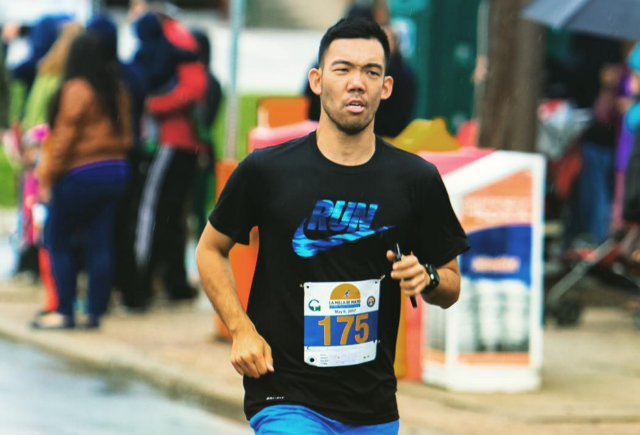Doubts swirled around my head, and my right quad muscles ached with cramp-like pain. It was only ten miles into the 2021 Philadelphia Marathon but as I watched what felt like hundreds of runners zip past me, I started to recalibrate my pre-race goal: Three hours and 50 minutes became four hours. Then four and a half hours. Then simply finishing.
The race turned into a mental battle. My legs screamed for me to stop and walk, while my brain urged me to continue on pace. The 10th mile would be my slowest up to that point. I tried to find motivation wherever I could. I repeated the mantras, “mind over body” and “don’t run scared,” to myself as I locked on to the runners in front of me. I visualized how satisfying it would feel when I crossed the finish line with another sub-four hour marathon. I thought about my supporters back home who were tracking my race online.
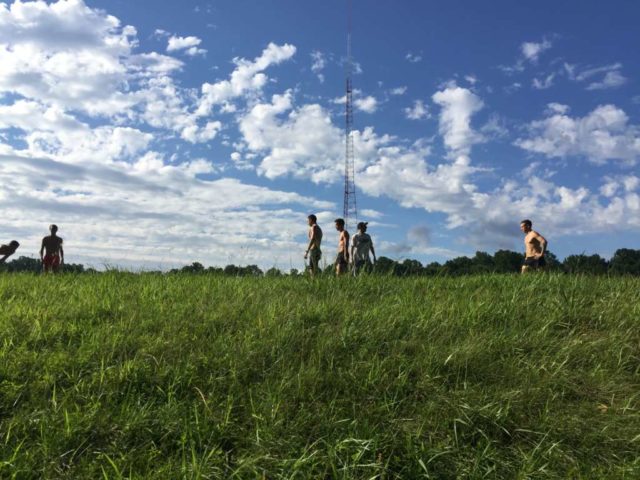
Tom Martin isn’t sure what he’d do without the towers field in Bethesda, Md. Maybe his cross country runners would have to do more workouts on the track, he says. Maybe he’d even think about retiring from coaching. That’s how important the roughly 1.25-mile, grass-and-dirt loop around the WMAL radio towers is to him. It’s more than just a 75-acre field nestled between two highways and not far from Walter Johnson High School, where Martin coaches. It’s a crucial piece of the local running culture in Montgomery County.
“For me, it’s almost as if, when that goes away, I might consider retiring,” Martin says. “It’s invaluable just to have… this nice open space where we can do all different kinds of workouts. It would be a tremendous loss to our program.”
WTOP caught the four towers fall Nov. 4 at 6:30 a.m.
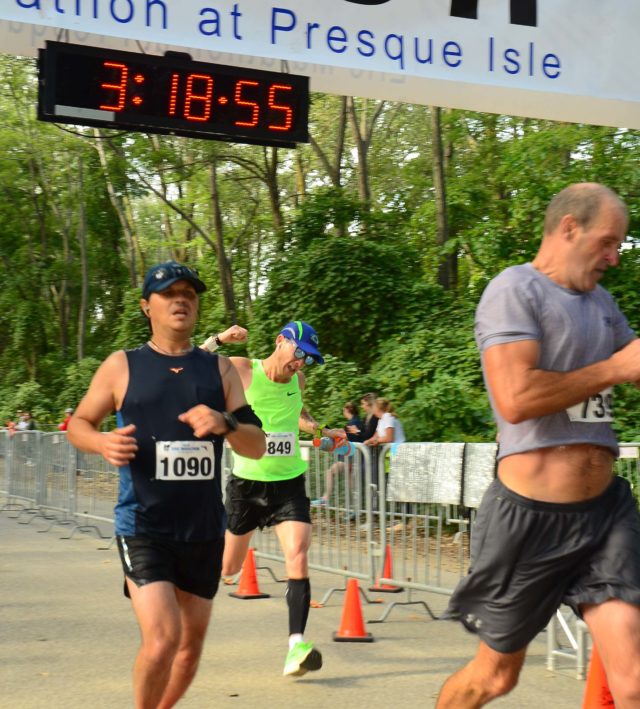
Conroy Zien dropped everything he was carrying when he spotted his wife, Glenda Garcia, outside the finisher’s chute at the Erie Marathon earlier this month and began to cry. Garcia figured the worst. Not again, she thought.
“I got really sad,” she said. “Like, how do we recover from this? I’m already thinking about how I can help him get over this.”
Since January, Zien had trained in ways he hadn’t done before. He ran hilly long runs in below-freezing temperature with the Broderick to Boston (B2B) group in Bethesda over the winter. He added miles to his mid-week runs, embraced speed workouts and changed his diet.
“I’ll be honest, I was pretty unpleasant for pretty much the whole year,” Zien said.
He did it all with the singular goal of qualifying for the Boston Marathon with enough of a buffer that he wouldn’t be on the outside looking in. Garcia didn’t know how to handle another setback.
“It’s okay,” she told him. “You did great.”
A couple minutes passed before Garcia asked for Zien’s time. She started to cry too.
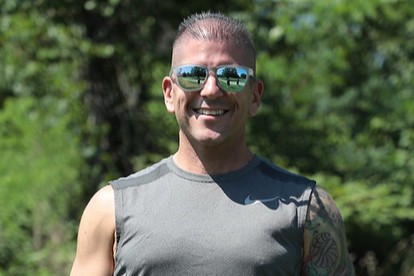
As a gregarious extrovert, Roman Gurule met a number of his friends through happy hours and dinners during his time as a federal government employee. He joined his colleagues whenever they drank alcohol and Gurule went out about five times a week to relieve stress from work. It felt like a normal thing to do, even if he would wake up the next morning with a pounding headache and a scant memory of what happened the previous night.
He repeatedly told his friends he would cut back on his self-proclaimed “rockstar lifestyle” that he started after college, but then it would happen again the following weekend. And the next. “I think that nobody took me seriously,” Gurule says.
Finally, he had enough. Drinking all week began to negatively affect all aspects of his life.

Conroy Zien celebrated finishing the 2016 Rehoboth Beach Seashore Marathon at a post-race party surrounded by some of his closest friends he’s made through running and with another medal around his neck to add to his extensive collection of race souvenirs.
His time of 3 hours, 35 minutes, and 14 seconds placed him 138th overall out of 872 total finishers and top 25 in his age group. As the co-director of Montgomery County Road Runners Club’s First Time Marathon Training Program, Zien has helped hundreds of novice runners, including this reporter, accomplish their dream of completing 26.2 miles. RunWashington readers voted him Best Running Coach in 2015.
But a prevailing feeling of disappointment persisted. It didn’t help that at the party, a man who recognized Zien asked him the one question he had hoped to avoid.
“He said, ‘Have you run Boston?'” Zien recalls. “I said, ‘No I haven’t.'”
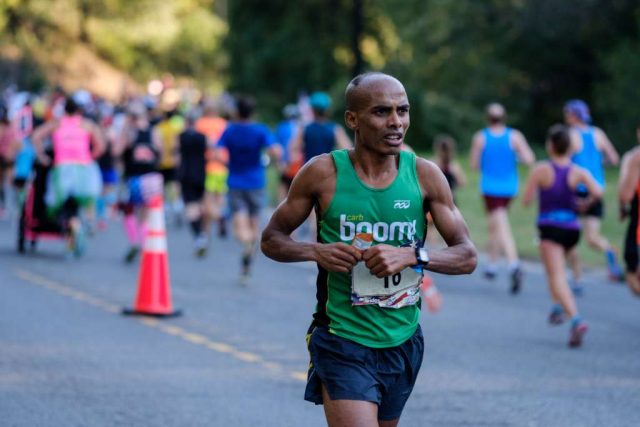
Desta Beriso Morkama was in a hurry. After winning the Marine Corps Marathon last October, Morkama quickly packed up his belongings, accepted his trophy and rode his bike home, where he made himself a quick meal and jumped into bed for a 30-minute power nap.
A few hours later, he would be reporting to his first shift at the local 7-Eleven convenience store. The celebration would have to wait.
“Before I work, I just push myself, ‘Desta, go, go, go, go work,'” Morkama said. “I push my mind that I have to work.”
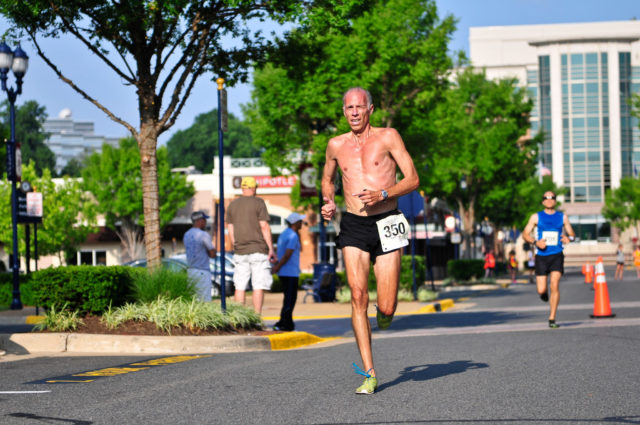
Ted Poulos was living the lifestyle of a typical post-college student. Employed for the first time since graduation, the 22-year-old indulged himself in happy hours during the week, followed by parties on the weekends. There was no better way to unwind after working long hours as an electrical engineer for IBM.
But the constant flow of beer and ample supply of fried food left little room for physical activity, and after about a month of the happy hour scene, Poulos decided it was time for a change – even if it meant giving up the simple, comfortable routine he had fallen into.
“It was, ‘Hey, this is fun, but it’s not going to be long term how I want to treat myself, how I want to treat my body,’” said Poulos, now 55. “So I just started running to keep in shape.”
Few, if any, could have imagined the running career that would follow.
Poulos is one of the most prolific racers in the country and finished last year having run 5,340 career races over the span of nearly 33 years – an average of about 161 races per year for the McLean resident.
In 2003, he set an unofficial record of most races run in a year with 337, which is now held by 66-year-old Bill Stahr, who ran 369 races in 2014. Last year, Poulos competed in 239 races despite being hampered by a hamstring injury he suffered in April.
“Once I started running and started improving, I really did want to see how far I could take this, and see how much I could test myself and find out where my limits were,” he said.
‘A fantastic athlete’
Decades before he became an obsessive runner with enviable personal records, Poulos left his high school track tryouts with a bad taste in his mouth. His performances were underwhelming and he failed to make the varsity team, an experience that soured Poulos on running.
But the Midwestern kid from Sioux Falls, S.D. and oldest of four children managed to stay active in other ways. Up through college, Poulos played a variety of intramural sports – volleyball, basketball and racquetball. It was all for fun, he said, not serious competition.
Those who have competed against Poulos, however, understand that his lack of youth sports pedigree means very little. This is especially apparent when Poulos – all 5-foot-9 and 135 lbs of him – speeds past runners half his age, while frustrating and eliciting awe in those battling for the podium in his age group.
“He’s clearly a fantastic athlete,” D.C. Road Runners President Rich Mendelowitz said. “The key is he knows that it takes hard work and he’s willing to put in the work and that’s what separates the boys from the men in running.”
Poulos’s very first race began one warm summer morning in 1984, when a local ice cream shop near his IBM office in Rochester, Minn. organized a two-mile and 10k fun run.
Poulos opted for the two-mile race, thinking 6.2 miles would be beyond his abilities. Running his first race ever, Poulos finished seventh overall with a time of 13:43. He was immediately hooked.
“I ended up getting a ribbon. I said, ‘Wow, this is pretty good,’” Poulos said. “It was the summer time, so they had ice cream and all kinds of fun activities afterwards. After that I said, ‘Hey, this is enjoyable. I had a good time, met some really nice people. I want to continue this.’”
Since then, Poulos has competed from the 1,500-meters to 3,000-meters, his favorite event, and all the way up to the marathon, where he set a personal record of 2:37:20 at the 1996 Boston Marathon.
After moving to the D.C. area in the mid-1980s, Poulos joined half a dozen running clubs, including DCRRC and the Potomac Valley Track Club, where he has served as the scorekeeper for the clubs’ race series.
Through club events and charity races, Poulos has no shortage of opportunities to compete. There are occasions where Poulos will race three to four times a week on the track, bouncing back and forth between meets.
And Poulos not only participates in these races, he puts himself in contention to win. According to Poulos’s meticulously-kept spreadsheet record of his results, which run 62 pages long, he has won a third of the races he’s entered.
No one is cutting Poulos from their teams now.
“I don’t know anyone his age who runs that competitively over that many races,” Mendelowitz said. “I don’t think a person exists when he’s in shape at that age.”
Passion for racing
Poulos rarely strays from his daily routine. He drops off his two young children, 10-year-old Evan and 8-year-old Paige, at school before going on his runs.
Having retired from his job as a regional business manager for Hewlett-Packard four years ago, Poulos is able to put in the time to train for races, averaging 35 to 45 miles a week.
And while some runners prefer running in a group to stay motivated, Poulos does most of his training on his own.
“He likes to challenge himself and kind of thrive off the competition,” said Poulos’s wife, Meg, whom he met at a DCRRC event in 2003. “He likes to meet goals. He’s very disciplined.”
In addition to a weekly long run, Poulos will do a track workout twice a week at a nearby high school, plus a six to eight-mile run once a week to “make up the strength.” He also lifts weights three times a week focusing on his abs, arms and shoulders and a little bit of legs at the gym in his basement.
Gone are the daily happy hour trips, but there are no specific foods or drinks that Poulos will avoid. He credits his “healthy metabolism” to “a lifetime of fitness” for his ability to keep his weight consistent throughout the years. He will even drink the occasional beer with dinner.
“His diet is completely ordinary, nothing extraordinary,” Meg said.
Simply put, there is no secret formula to Poulos’s success. His training strategy often revolves around racing, and lots of it.
“I found that the racing I was doing on the weekends was helping me for my peak racing goals for the year,” he said. “Some people like to do tempo runs, for example. I was using some of my races as tempo runs for my peak performances. It’s a strategy that worked for me.”
The strategy has led to multiple U.S. National Masters Championship titles, including a first place finish two years ago in the men’s 50 to 59 age division 4×800 meter relay, and a body of work that Poulos hopes can inspire his children and other people who are looking to become more active.
“Once you start something that you enjoy – for me, it happens to be running or racing, but for other people, whatever event you take, whether it’s swimming, walking, skiing, golfing, if you love it, you will do it,” Poulos said. “And if you keep doing it, you’ll get in shape. And that’s the best thing you can do for yourself. To find that love and find whatever your passion is and do it and do it consistently. You’ll have a better lifestyle if you do that.”
This article was originally published in RunWashington’s Spring 2017 issue
Kelyn Soong has covered local and national stories for the Washington Post and Washington City Paper, where he is now sports editor, and running for RunWashington since 2017. He recently wrote about his coach and friend’s big marathon breakthrough. Read more of his writing here.
Name: Kelyn Soong
Self-described age group: 30-35
Residence: Bethesda
Occupation: Journalist
Volunteer roles in the running world: I occasionally help out at MCRRC races, although not as much as I probably should!
Why you run: Because I like being a part of the running community and because it helps me maintain fitness. I also enjoy challenging myself and the feeling of having tangible goals I can work toward.
When did you get started running: I ran track for a couple seasons in high school but didn’t get into long-distance running until a few years after college.
Have you taken a break from running: How are we defining breaks? Like taking weeks off after a hard race? Then yes, all the time.
Training shoe: Mizuno Wave Inspire
Coach or training group: MCRRC’s XMP and Speed Development
The hardest race you’ve ever run: Probably the 2015 Marine Corps Marathon or any mile race
Most adventurous decision you’ve made with your running: Signing up for the 200-mile American Odyssey Relay from Gettysburg to D.C.
Running mentors: My coaches from MCRRC
My favorite place to run in the D.C. area is: Capital Crescent Trail, Rock Creek Park, National Mall
Favorite local trail: I can’t remember the last time I went trail running…
My best race was: 2016 Shamrock Half Marathon (1:39:02)
Favorite local race: This is a tough one. Maybe the ACLI Capital Challenge three-mile run. The entire course is flat and the team I organized won the overall title in 2018. 🙂
Ideal post-run meal: Is it strange that I don’t get that hungry after runs? But if I do, I’ll sometimes go to Ize’s Deli and Bagelry for an egg and cheese sandwich on a wheat bagel.
Favorite flavor of gel, gu, etc: I’m not picky. Not coffee though.
Pet peeve: Pacers and fellow runners around my pace talking really loudly during races make me feel really inadequate.
Goals: Sub-5:30 mile and sub-four marathon
Your advice for a new runner: Get fit for the right shoes, find a group to train with, sign up for a reasonable goal race, and enjoy the process. Oh, and don’t go out too fast during races.
Favorite running book: Unbroken by Laura Hillenbrand.
Song in your head during a run: None, thankfully?
Have you dealt with a major injury: I’ve had chronic issues with my calves.
Running quote: “A lifetime of glory is worth a moment of pain.” ―Pete Zamperini in Unbroken
Why is the D.C. area a great place to be a runner: From casual runners to professional athletes, D.C. has options for nearly every type of runner. The summers can absurdly humid, but there are so many different places to run and runners are everywhere. And each of us has a story to tell. It reminds me of a quote I once read in the Post: “Running appeals to a certain type of person,” said Carla Freyvogel, vice president of the Washington Running Club. “It is a sport that’s very much consistent with your stereotypical Washingtonian: competitive, self-motivated, out to prove a point, independent. That’s a Washingtonian. That’s a runner.”


